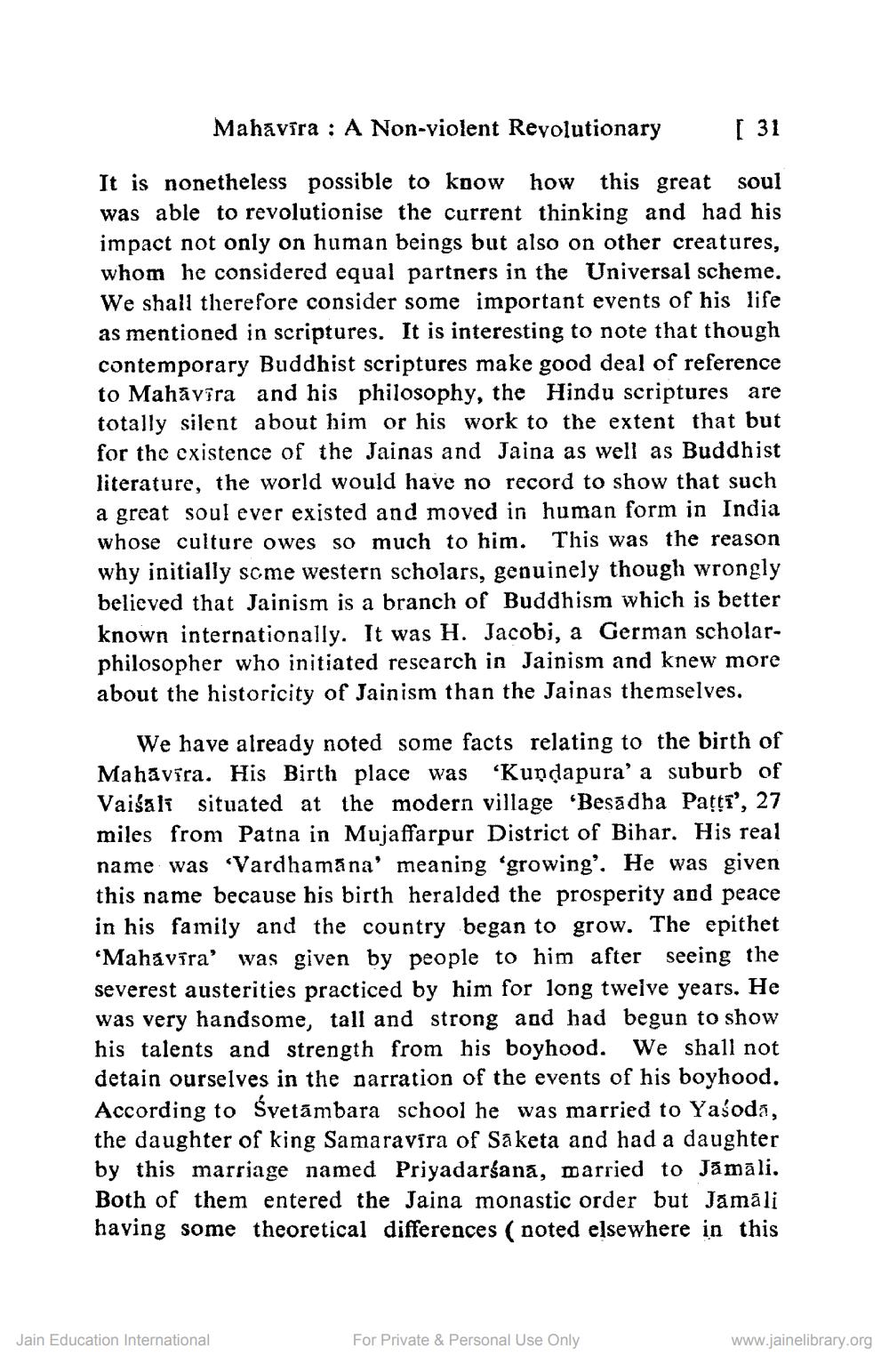________________
Mahavira: A Non-violent Revolutionary
soul
It is nonetheless possible to know how this great was able to revolutionise the current thinking and had his impact not only on human beings but also on other creatures, whom he considered equal partners in the Universal scheme. We shall therefore consider some important events of his life as mentioned in scriptures. It is interesting to note that though contemporary Buddhist scriptures make good deal of reference to Mahavira and his philosophy, the Hindu scriptures are totally silent about him or his work to the extent that but for the existence of the Jainas and Jaina as well as Buddhist literature, the world would have no record to show that such a great soul ever existed and moved in human form in India whose culture owes so much to him. This was the reason why initially some western scholars, genuinely though wrongly believed that Jainism is a branch of Buddhism which is better known internationally. It was H. Jacobi, a German scholarphilosopher who initiated research in Jainism and knew more about the historicity of Jainism than the Jainas themselves.
We have already noted some facts relating to the birth of Mahavira. His Birth place was 'Kundapura' a suburb of Vaisal situated at the modern village 'Besādha Paṭṭī', 27 miles from Patna in Mujaffarpur District of Bihar. His real name was 'Vardhamana' meaning 'growing'. He was given this name because his birth heralded the prosperity and peace in his family and the country began to grow. The epithet 'Mahavira' was given by people to him after seeing the severest austerities practiced by him for long twelve years. He was very handsome, tall and strong and had begun to show his talents and strength from his boyhood. We shall not detain ourselves in the narration of the events of his boyhood. According to Svetambara school he was married to Yasoda, the daughter of king Samaravīra of Saketa and had a daughter by this marriage named Priyadarśana, married to Jāmāli. Both of them entered the Jaina monastic order but Jamali having some theoretical differences (noted elsewhere in this
Jain Education International
[ 31
For Private & Personal Use Only
www.jainelibrary.org




